National Insect Week is approaching! Running from 23rd – 29th June, it brings a perfect opportunity to celebrate the incredible ecology and importance of these six-legged invertebrates. Organised by the Royal Entomological Society (RES), the week highlights the often-overlooked creatures that play vital roles in our ecosystems.
London is home to an impressive array of insect life that occupy a range of areas, from precious ancient woodlands to urban roof gardens and planters. Monitoring and studying these creatures is no small task, and at GiGL we curate species records from all kinds of sources, including public sightings, recording apps, professional surveys, and specialist groups and schemes.
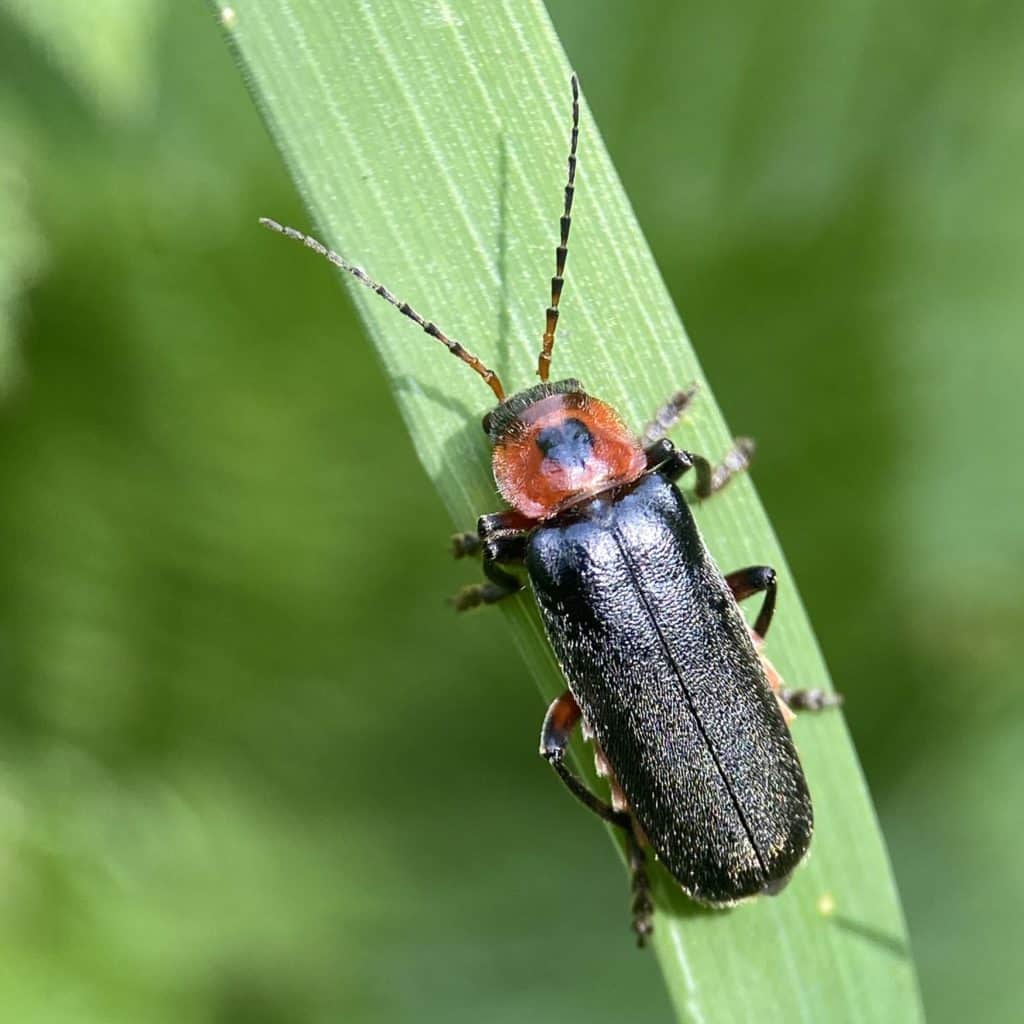
Every record counts!
Get recording! We need your involvement – whether it’s a one-off sighting or regular observations, from beginners or experts, each contribution is vital to understanding and protecting local wildlife
We encourage you to start discovering and recording the incredible insect life around you – look closely at plants, in crevices, or even fence posts to spot unique species. With constantly improving resources and tools there’s never been a better time to get involved. Explore National Insect Week’s learning resources, get involved with events during the week, visit our website to submit records (or submit to iRecord), visit publicly accessible wildlife sites using our Discover London map, and see what incredible species you can spot!
The GiGL team also love to get involved in recording. At a recent training day at Little Wormwood Scrubs, the team spotted vibrant swollen-thighed beetles (Oedemera nobilis), tortoise bugs (Eurygaster spp), and meadow brown butterflies (Maniola jurtina) to name a few. In other exciting finds, GiGL Officer Becky was thrilled to spot her very first weevil on a hike a few weeks ago – something she’d wanted to see for ages. CEO Mandy also found a Hawthorn shield bug, or as she likes to call it, a ‘disco’ shield bug!
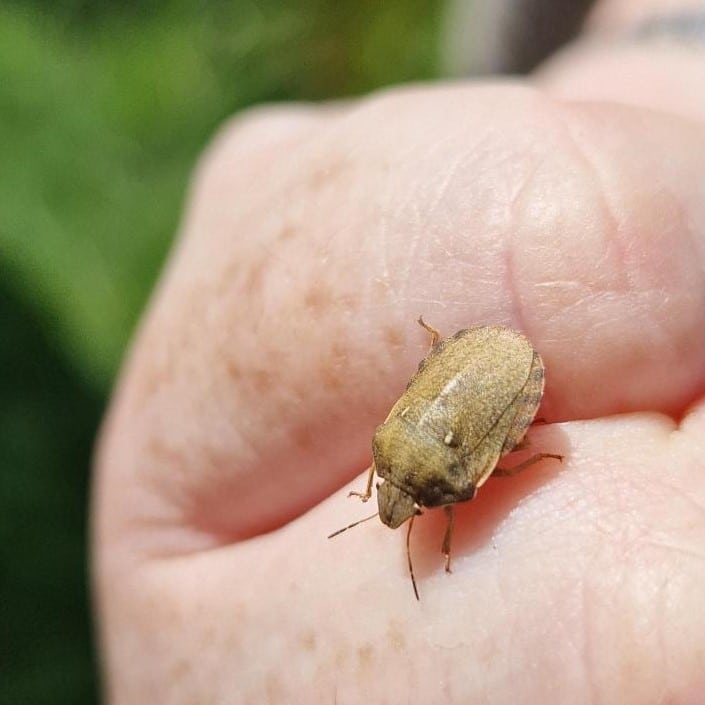
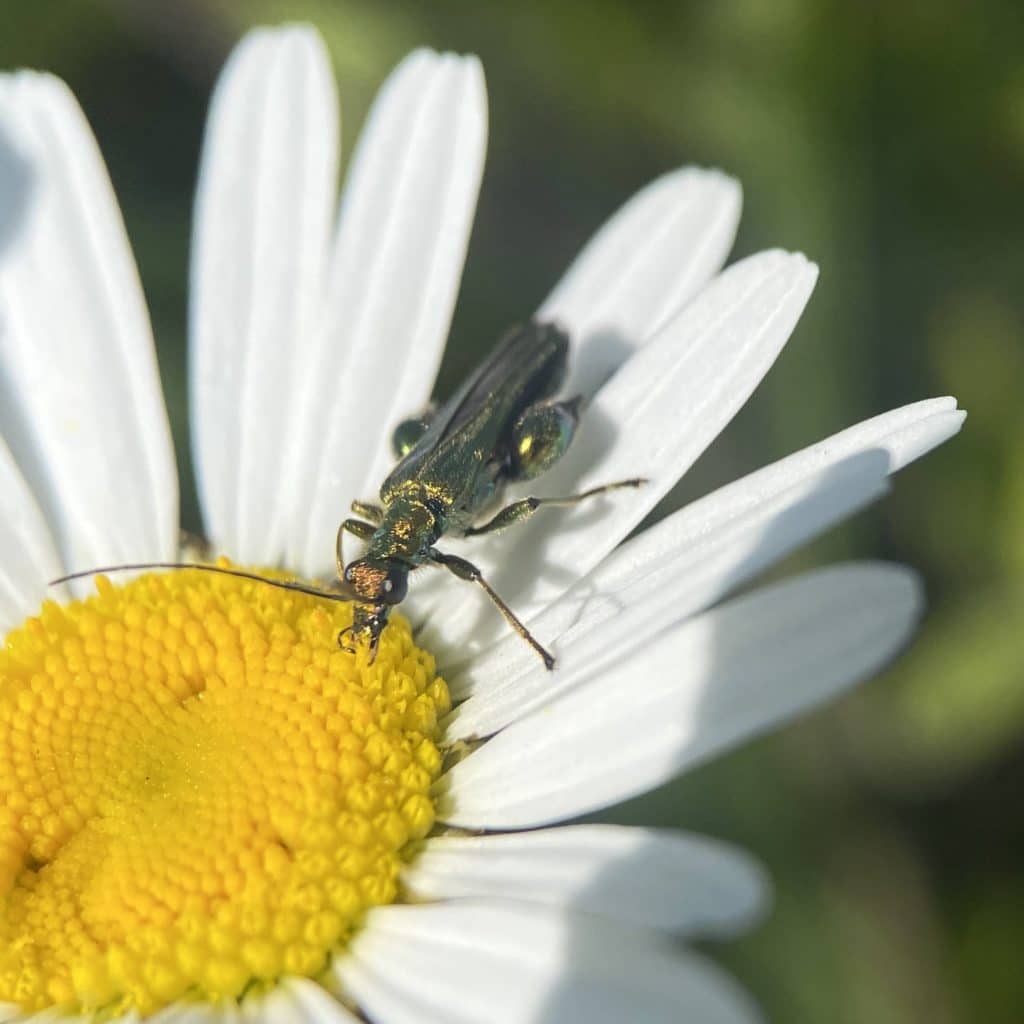
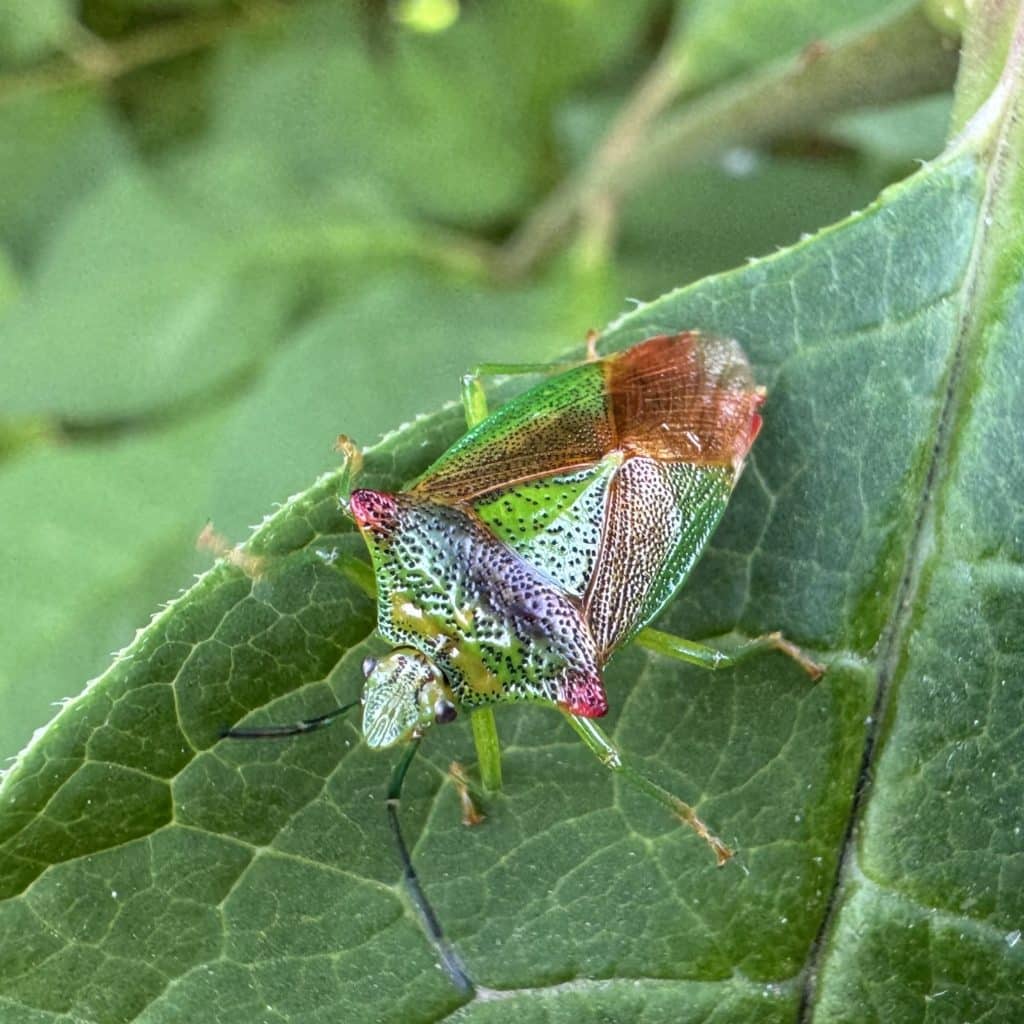

Priority Insects
We’re also taking this opportunity to introduce the Local Nature Recovery Strategy (LNRS) Priority Species Longlist. The list highlights species in need of conservation action, selected through a combination of national guidance and local expertise. Each entry includes habitat information and practical measures to support recovery that relates to the overall LNRS. Of the species in the list, 115 (23%) are insects, emphasising how crucial insect conservation is to nature recovery in London.
This article includes some of our latest infographics, showcasing just a handful of insect species found in London and where they’ve been spotted. These visual tools not only help showcase insightful species stats, but they’re also available as a service, so do get in touch if you’d like to request bespoke infographics or reports for your local group, organisation or project.
Let’s dive into the world of insects and explore where these small but mighty species are making their homes across our capital…
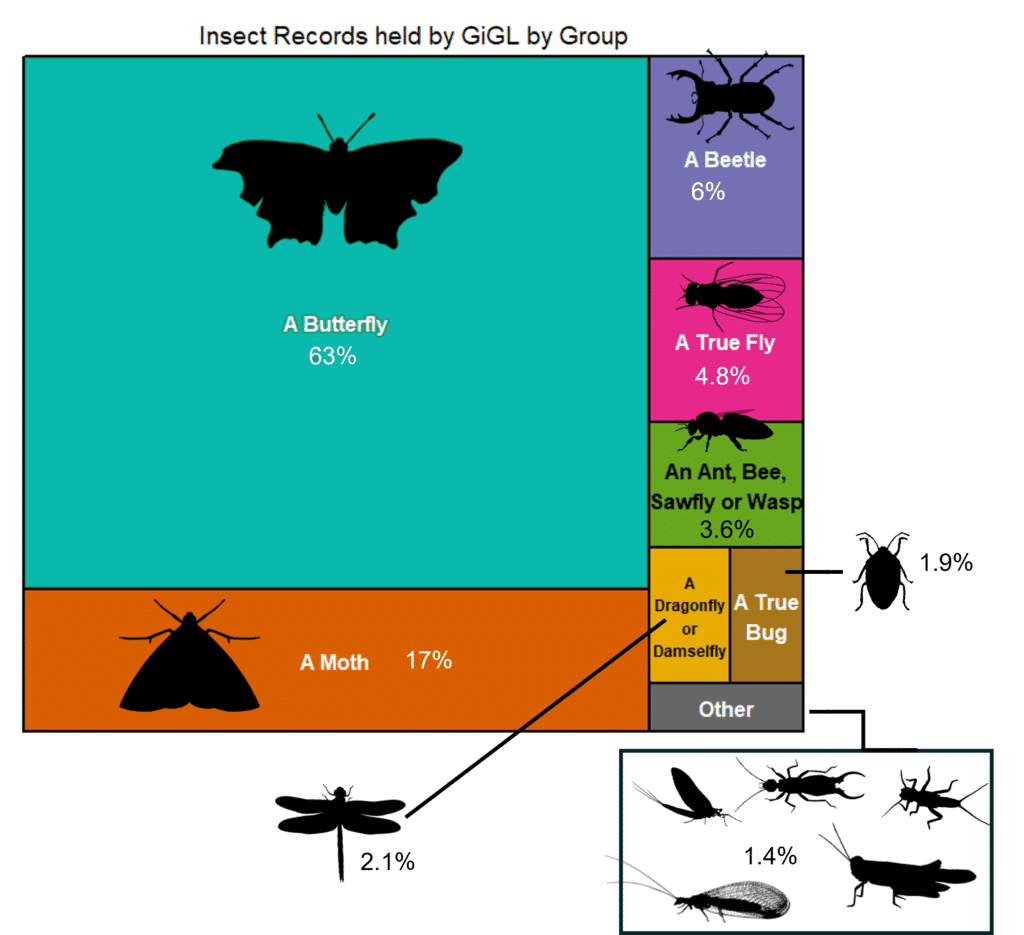
In GiGL’s species database, the top recorded insect species fit into the seven main taxon groups above, but we can’t forget the many species that come under the ‘other’ category, such as alderflies, grasshoppers & crickets, lacewings, earwigs, and more!
Follow the links to view site information and scroll down to hear more about the species…
Purple emperor butterfly
Scarce emerald damselfly
3 Southmere Park & YarntonWay/Viridion Way
Shrill carder bee
London’s LNRS Insect Spotlights
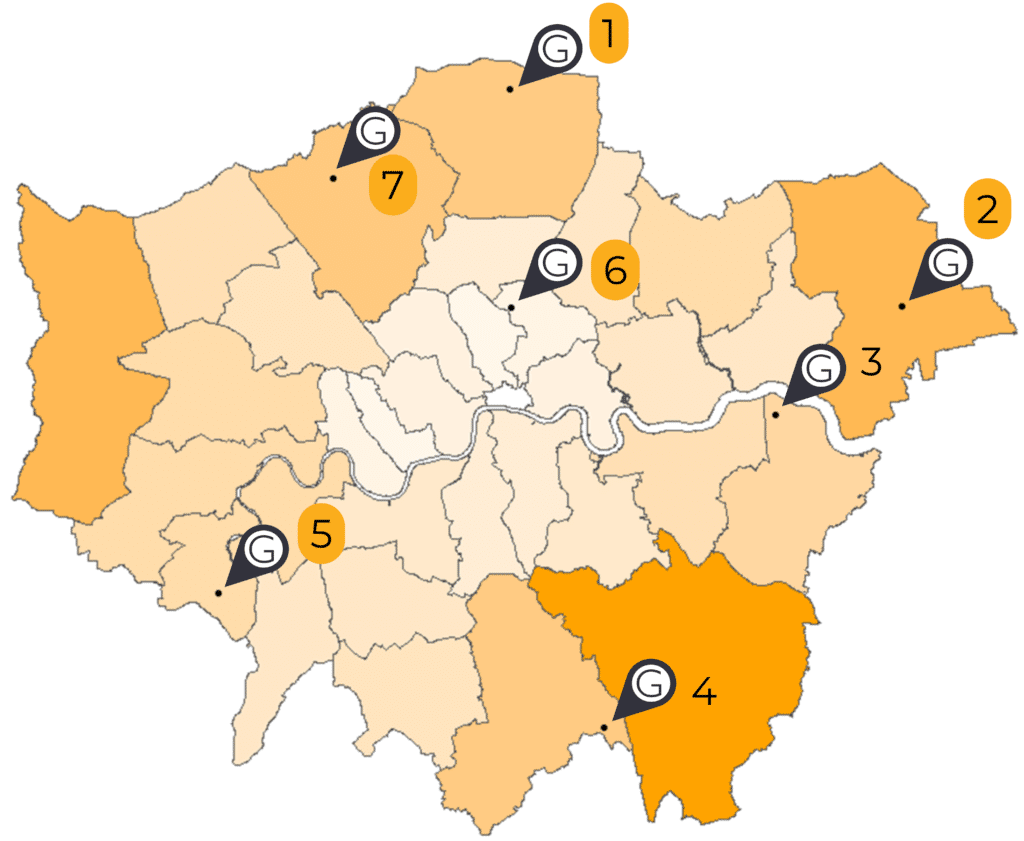
4 Hutchinson’s Bank and Frylands Wood
Small blue butterfly
Stag beetle
Small copper butterfly
7 Totteridge Fields and Highwood Hill
Dingy skipper butterfly
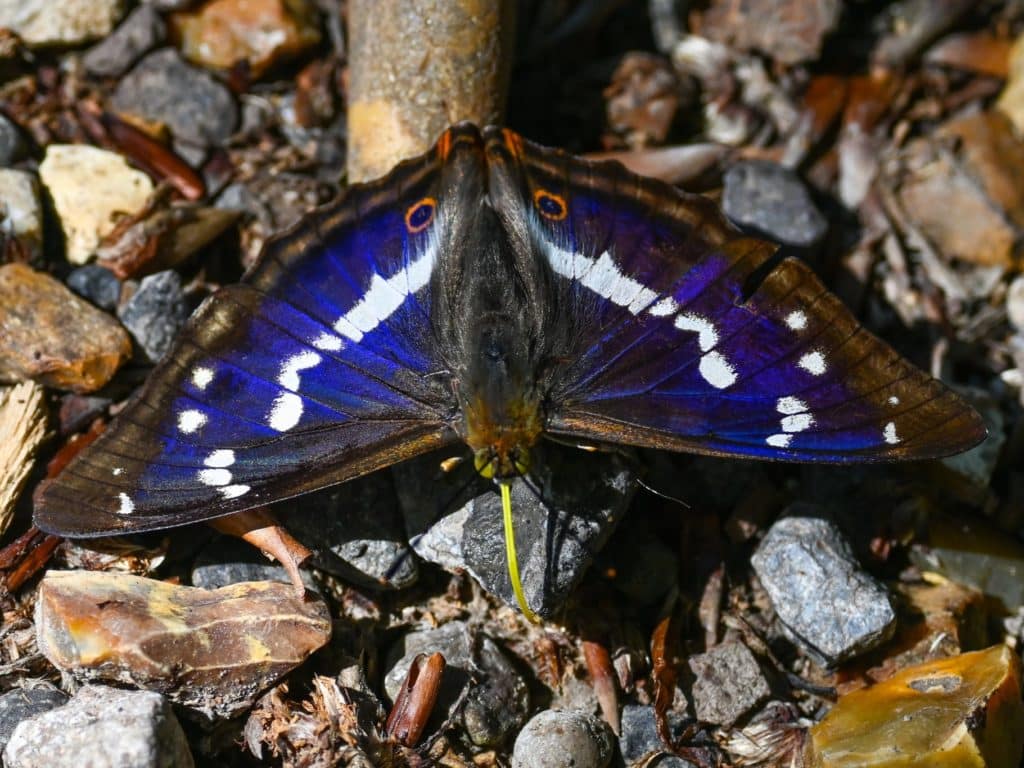
1 Whitewebbs Wood An extensive ancient woodland in Enfield. The stunning purple emperor (Apatura iris) butterfly has been spotted here. The adults can be elusive, feeding on aphid honeydew and tree sap at the tops of trees. Eggs are laid on willow trees, which are the food plant for the caterpillars.
Image: Purple emperor butterfly © Frank Sengpiel, via iNaturalist.
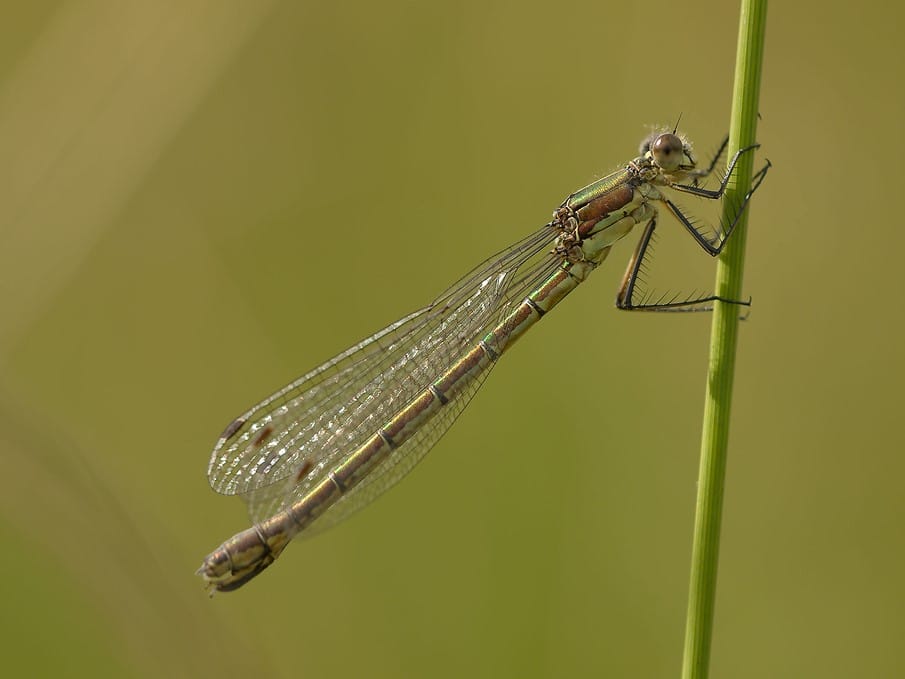
2 Ingrebourne Valley The River Ingrebourne could be the most natural in London, with a wide range of habitats including reedbeds, lakes, wet grassland and willow and alder woodland. The site supports a diverse insect population, including the nationally rare scarce emerald damselfly (Lestes dryas).
Image: Scarce emerald damselfly © Thierry Arbault, via iNaturalist
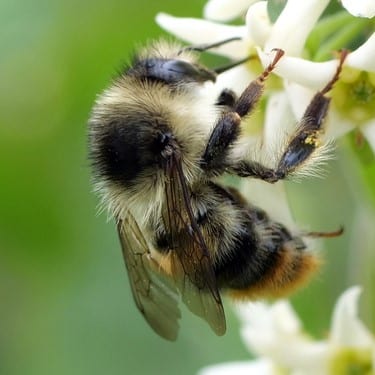
3 Southmere Park & YarntonWay/Viridion Way A large lake, parkland and poplar woodland in Bexley. The UK’s rarest bumblebee, the shrill carder bee (Bombus sylvarum) has been found in amongst the wildflowers, showing how valuable patches of flowers are within our urban landscape.
Image: Shrill carder bee © Wolfgang Jauch, via iNaturalist.
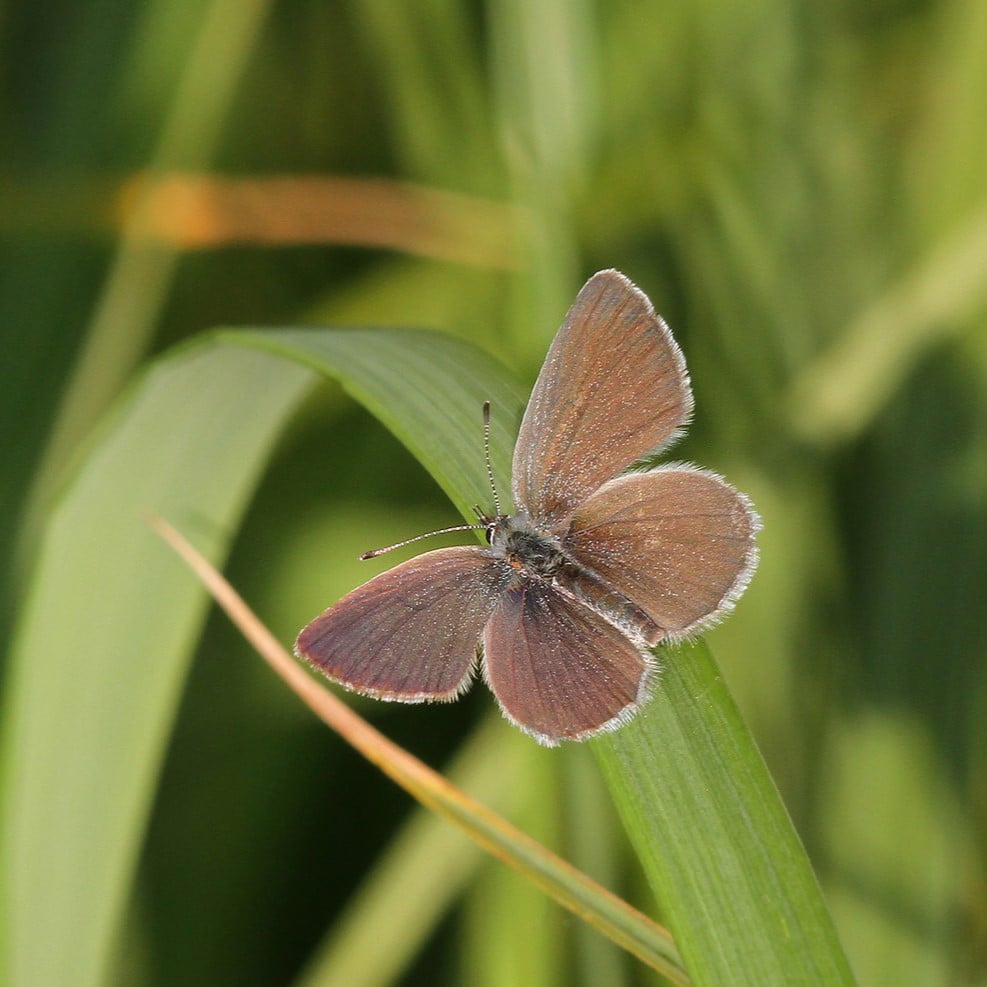
4 Hutchinson’s Bank and Frylands Wood The site in Croydon is made up of chalk grassland, ancient woodland and scrub. Over 100 species of moth and 28 species of butterfly can be seen here including the small blue (Cupido minimus). It is the UK’s smallest resident butterfly and is restricted to sites where its foodplant kidney vetch (Anthyllis vulneraria) is found.
Image: Small blue © Christoph Moning, via iNaturalist.
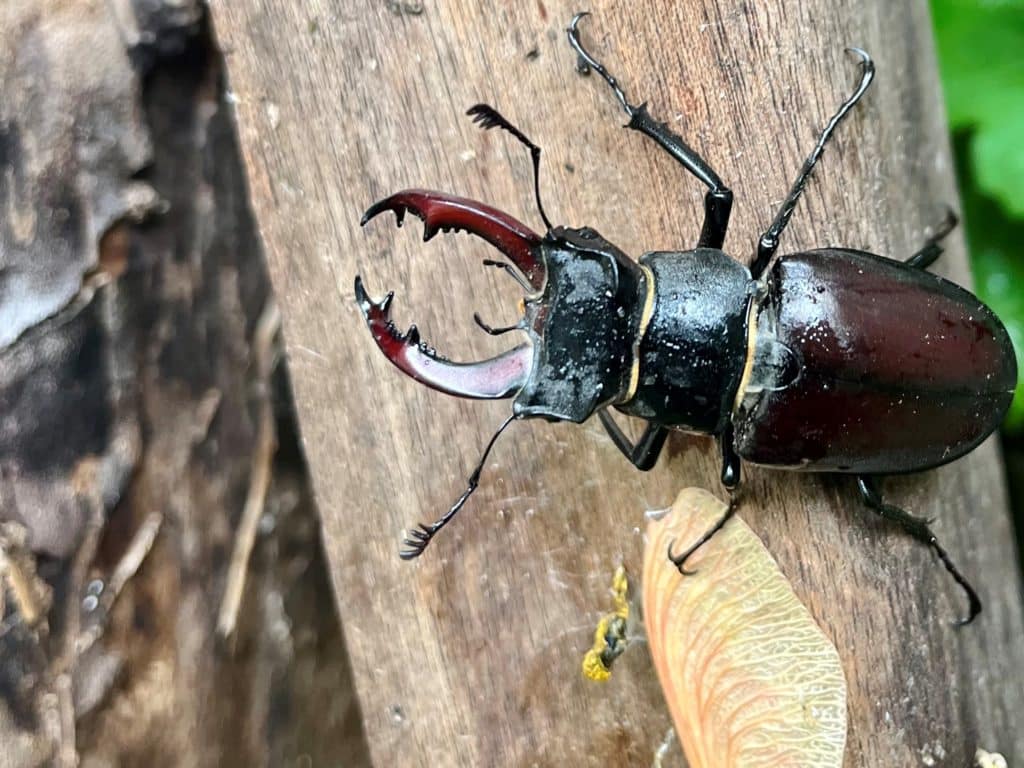
5 Bushy Park The second largest of the Royal Parks and historically linked to the nearby Hampton Court Palace. It is home to the stag beetle (Lucanus cervus) which depends on old trees and rotting wood for its larvae to live in and feed on. South and West London is a particular stronghold for the species.
Explore the history, trends and distribution of stag beetle records in an animation from a previous GiGLer article here: A New Vision
Image: Stag beetle © Estelle Vincent
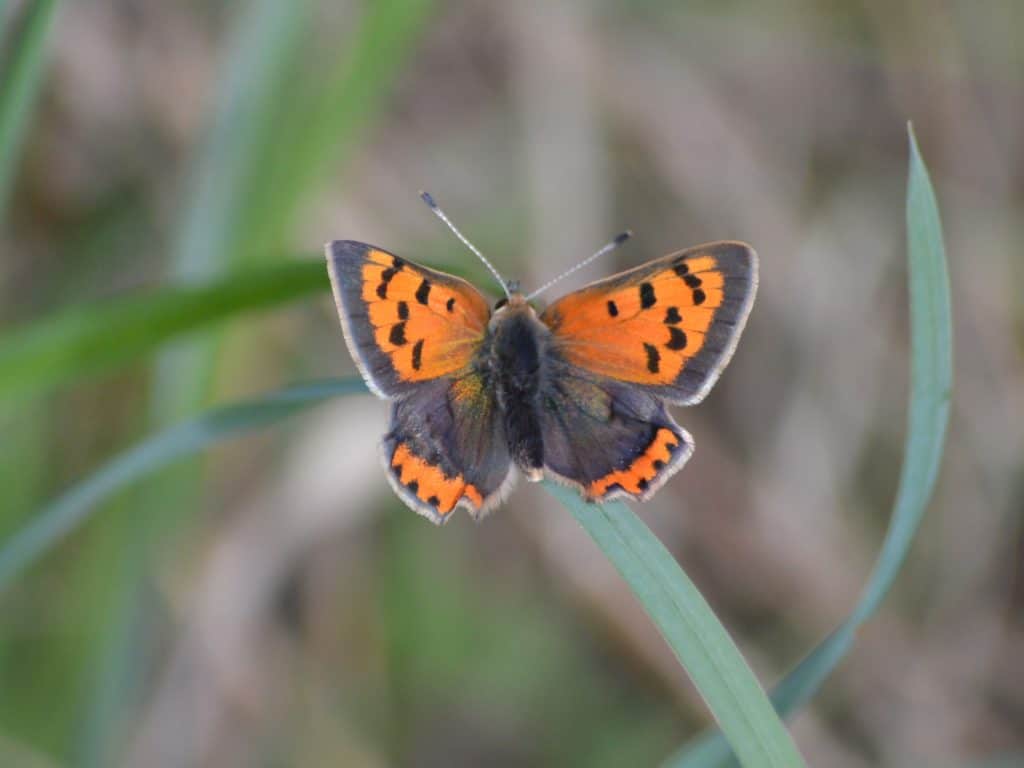
6 Clissold Park The largest park in Hackney includes two lakes, scrub, neutral grassland and veteran trees. Among a wide range of species found on the site is the small copper butterfly (Lycaena phlaeas), which has declined throughout its range in the last century.
Image: Small copper © Becky Garden
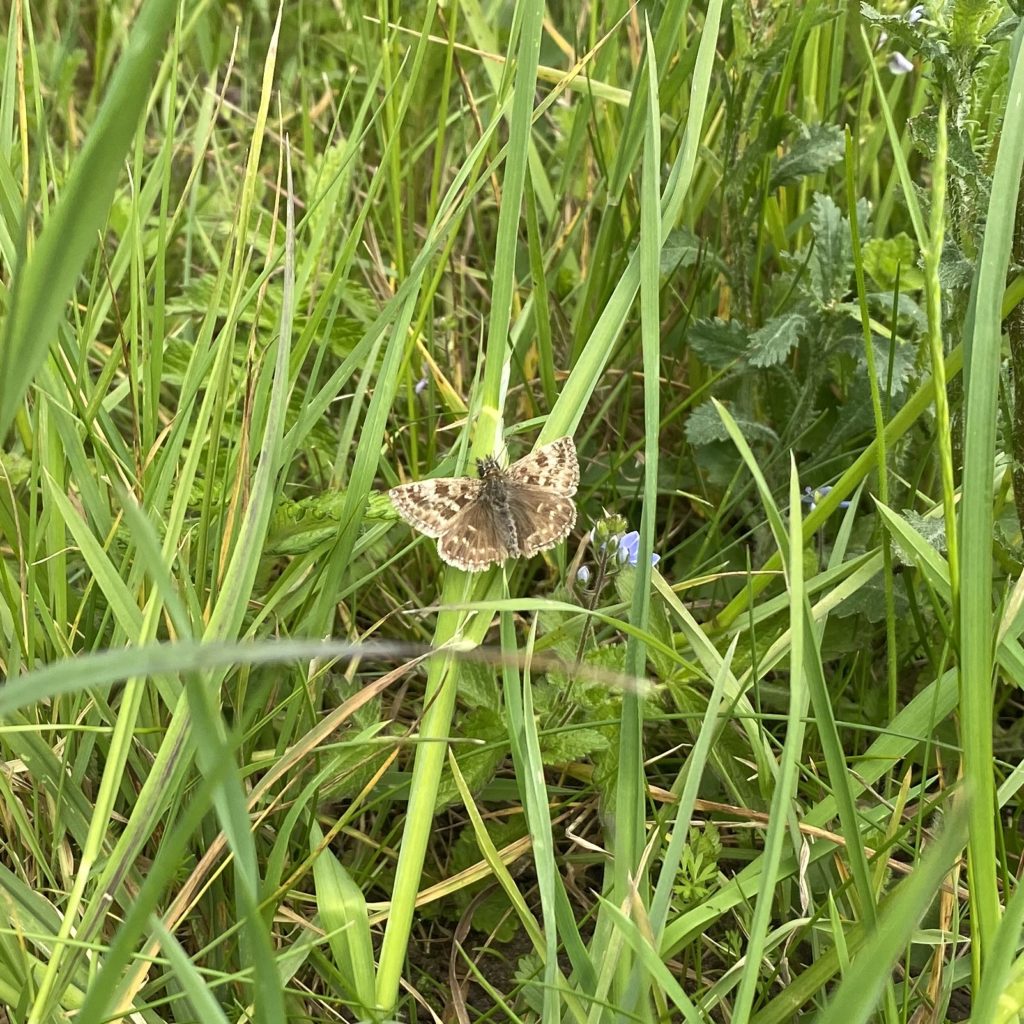
7 Totteridge Fields and Highwood Hill The site in Barnet includes large areas of uncultivated grassland, a network of old hedgerows and ditches that are home to an important community of insects, including nationally rare beetles as well as a large number of moths and butterflies. One of the butterflies found there is the dingy skipper (Erynnis tages), a small brown and grey butterfly easily confused with a moth. It requires a mix of short and tall vegetation as adults can be found basking on bare ground in the sun, or perching on dead flowerheads in dull weather. Caterpillars feed on common bird’s foot trefoil (Lotus corniculatus).
Image: Dingy skipper © Anna Guerin
